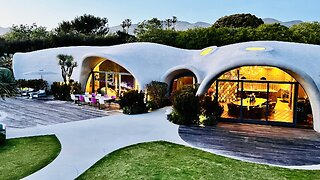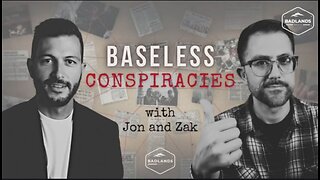Premium Only Content

Socialism Nightmare: Venezuelans Eating Dogs, Cats and Pigeons to Survive
At the start of 2014, Venezuela’s GDP stood at $371.34 billion, with nearly half of that coming from oil (it accounts for almost 100% of exports). But after a year-high of $105.54 in June, crude plummeted by more than 50% to $48.51 by the end of the year. Oil has held steady in the $50-a-barrel range since, allowing the country’s socialist policies to materialize without the guise of high crude–and economic disaster has ensued.
Just this year, Venezuela has faced shortages in toilet paper, diapers and milk (and more) forcing more than 6,000 people to cross the border in Colombia to purchase necessities. The country had to ration its electricity use because of severe power shortages. It also could no longer afford to print its own money. Come 2016, the IMF forecasts Venezuela’s inflation rate to exceed 1,600%.
A Bolivarian Republic, Venezuela turned to socialism in 1998 when Hugo Chavez was elected president after two unsuccessful coup attempts to oust his predecessor. The new regime brought not only a new constitution, but higher oil prices as well. The following year Chavez passed laws redistributing land and wealth, which he followed in 2005 with a land reform decree that would eliminate larger estates to the benefit of the poor in rural areas.
In 2007 the government took control of important oil projects in the Orinoco Delta and later expropriated two U.S. oil companies, furthering Chavez’s nationalization plans.
Nationalization continued with the Bank of Venezuela and household fuels distributors and petrol stations. In 2011, with a 27% annual inflation rate, the Venezuelan government introduced price controls of some basic goods (they would extend to other products in the following years).
By the time of Chavez’s death in 2013, inflation had grown to 50% and rose to 63.4% in the following year. Towards the end of 2014, the country entered into a recession.
***
Present-day Venezuela is facing a humanitarian crisis and Nicolas Maduro, Chavez’s hand-picked successor, and his socialist regime is rightly shouldering the blame. The country’s emphasis on oil exports, price controls and a heavily-controlled economy are all features found in other current and former socialist countries–features that have contributed to the demise of whole economies, or brought them close to it.
Perhaps the most obvious example of economic failure is the Soviet Union (or USSR), With its highly centralized government and economy, the USSR survived for 69 years until its collapse in 1991, representing the longest time a state has been led by a Communist Party (China comes in second at 67 years).
While oil prices were high, the Soviet Union appeared to have a strong economy and could maintain its focus on increasing its military power. But when oil prices fell towards the end of the 1980s, the USSR found itself forced to borrow from Western banks. Its sluggish economic system and dependency on the West also weakened the control that it had over countries under the USSR’s control and eventually led to its demise. Venezuela now finds itself in the same difficult position.
Venezuelan officials like to blame the crisis on the United States and right wing business owners aiming to sabotage the system, it seems obvious that the heavily centralized state-run system inherited from Chavez is what is driving Maduro’s country to ruin. With a GDP percent change of -8% from 2015 to 2016 and an unemployment rate of over 17%, the only thing that can save Venezuela is ditching socialism.
The opposition has called for a referendum to oust Maduro this year, but the process is still in limbo–meaning relief for the Venezuelan people might not come until 2018, the next scheduled presidential election.
Even then, change can never be promised in the world’s 9th most corrupt country.
#communism
#socialism
#documentary
-
 2:16
2:16
Seeker Land
1 month agoAmazing Bubble Eco House Construction - Concrete Poured On Air Shell - Binishells
52 -
 5:02
5:02
How to Survive
3 years agoHow to Survive Eating Mold
5593 -
 LIVE
LIVE
FreshandFit
2 hours agoAfter Hours w/ Girls
2,229 watching -
 LIVE
LIVE
Akademiks
2 hours agoDrake vs Roc Nation! Tory Lanez argues for new Trial! Bloodhound Q50 dodged 60 shots.
1,740 watching -
 LIVE
LIVE
Badlands Media
18 hours agoBaseless Conspiracies Ep. 146
5,416 watching -
 LIVE
LIVE
Drew Hernandez
9 hours agoTRUMP SECURES SETTING MEET BETWEEN PUTIN & ZELENSKYY
721 watching -
 LIVE
LIVE
SpartakusLIVE
6 hours agoSpartan HERO here to MOTIVATE the MASSES
338 watching -
 1:27:19
1:27:19
Badlands Media
18 hours agoCulture of Change Ep. 117: DARPA, Downloads & the Roots of the Narrative
33.4K2 -
 LIVE
LIVE
BubbaSZN
13 hours ago🔴 LIVE - MAFIATHON (COMPLETING THE MAFIA SERIES WITHOUT ENDING STREAM)
39 watching -
 2:50:02
2:50:02
TimcastIRL
4 hours agoTrump Calls Putin During Zelenskyy White House Visit, European Leaders Praise Trump | Timcast IRL
149K53